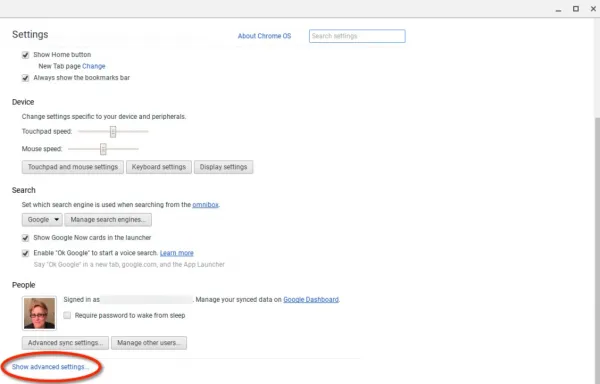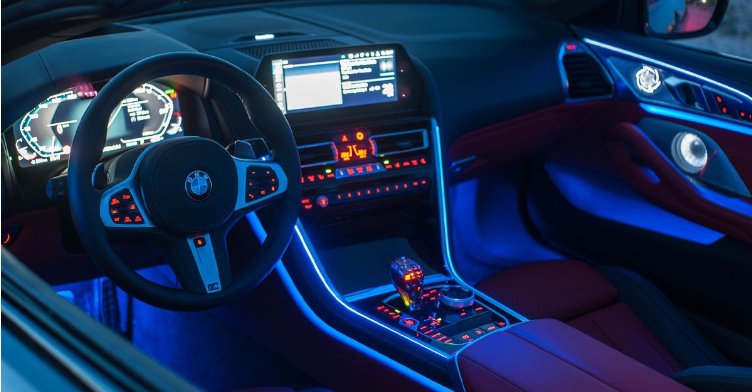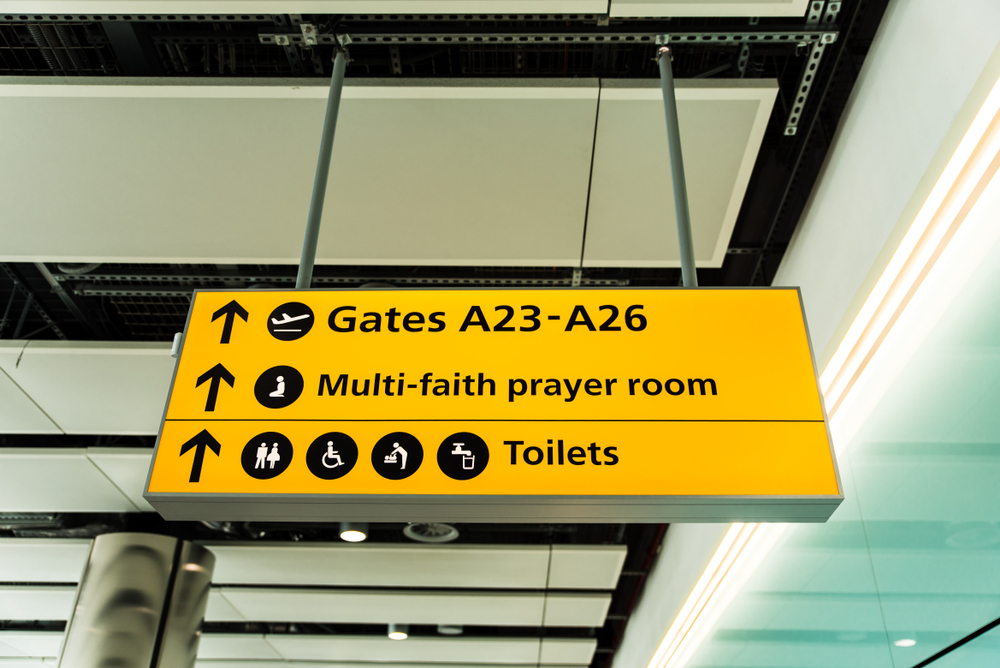Featured
How does a traffic light detect that a car has pulled up?

If you’ve ever wondered how a traffic light knows when to change, you’re not alone. It’s a common question, and the answer is actually pretty interesting. So, how does a traffic loop detector that a car has pulled up? The answer lies in sensors that are buried beneath the pavement at the stop line. These sensors are able to detect the weight of a car as it comes to a stop, and they send a signal to the traffic light that it’s time to change. While this technology has been around for awhile, it’s constantly evolving. The sensors are getting more and more accurate, and they’re even being used to detect things like bicycles and pedestrians. So, the next time you’re stopped at a red light, take a moment to think about the technology that’s making it all possible.
The traffic light’s sensors
The traffic light’s sensors are located at the base of the stop line. These sensors use inductive loops to detect metal objects, such as vehicles, that are passing through them. When a vehicle is detected, the traffic light will change to green and allow the vehicle to pass.
How the sensors work
A traffic light has sensors that detect when a car has pulled up. The sensors are usually located in the ground near the traffic light. They send a signal to the traffic light that tells it to change colors.
The different types of sensors
Different types of sensors can be used to detect the presence of a car. The most common type of sensor is an inductive sensor, which uses a coil of wire to detect changes in the magnetic field around it. Inductive sensors are typically used in parking lots and driveways to detect the presence of cars.
Another type of sensor that can be used is called a capacitive sensor. This type of sensor uses an electric field to detect the presence of objects. Capacitive sensors are often used in doorways and windows to detect the presence of people or animals.
Infrared sensors can also be used to detect the presence of objects. These sensors use infrared light to detect heat signatures from objects. Infrared sensors are often used in security systems to detect the presence of intruders.
Why do traffic lights need sensors?
In order for a traffic light to change from red to green, it needs to detect that a car has pulled up and stop. This is done with sensors that are placed on or near the road. There are two main types of sensors: inductive loops and radar.
Inductive loops are installed underground and detect the magnetic field emitted by a car as it passes over the sensor. The signal from the inductive loop is then used to trigger the traffic light to change.
Radar sensors emit radio waves and then measure how long it takes for them to bounce back off of an object. By measuring the time it takes for the waves to return, the radar sensor can determine how far away the object is. This information is then used to determine when to change the traffic light.
How do traffic lights without sensors work?
There are a few different ways that traffic lights without sensors can work. One common method is to use a time-based system. This means that the light will change based on a set schedule, regardless of whether there are cars present or not. Another option is to use an inductive loop system. This involves placing a wire in the ground that creates a magnetic field. When a car drives over the wire, it disrupts the magnetic field and this triggers the light to change.
Conclusion
This is how a traffic light detects that a car has pulled up: an inductive loop is installed in the ground, and when a car passes over it, it disrupts the magnetic field and sets off a sensor. This then triggers the traffic light to change.
Featured
Fuel and Lubrication Materials for Sale

You can carefully operate your agricultural machinery and equipment, always choose original spare parts, and still encounter breakdowns and loss of productivity. How and why might this happen? Just skimp on fuel and lubrication materials or buy them from unreliable sources.
It is not necessary to spend a lot of money, but it is always important to pay attention to the subtleties of the choice.
Here are a few of them:
- Don’t be lazy, open the service book of your machinery or equipment and carefully read the characteristics.
- Octane number is a very important, do not ignore this indicator.
- Climatic conditions and their changes affect engine operation. For example, diesel fuel can thicken in winter; winter fuel should be used.
- The presence of international standards and certificates indicates the reliability of the manufacturer; always check their availability among all fuels and lubricants for sale.
- Don’t experiment with alternative types of fuels. Be sure to check if they are compatible with your equipment.
You should also be responsible with lubricants. Each lubricant has characteristics that are suitable for a specific type of equipment. You can select engine oils, bearings, and so on. The most important technical characteristic is viscosity. Compliance with the indicators will ensure proper operation.
You can now buy lubricants and fuel additives online on one website: https://usa.vas.trade/fuel-and-lubricants-materials, without wasting extra time searching. “VAS” agricultural bulletin board is designed to enable the farmer to shop securely wherever he is and can buy all-important items in one place.
However, this is not a complete description. The entire site is a clear yet in-depth catalog of agricultural products and services. Any action on the website, except advertising and promotion, is free and without any hidden commissions.
Wholesale fuels & lubricants, like retail ones, are in the same section. Using sorting tools, you can highlight the ones you need and further speed up the search for products. Each ad has a detailed description, photos from all sides and video reviews from YouTube.
To purchase, you need to write to the online chat or call; the phone number is always in the publication.
If the seller has the “negotiated price” button active, you can safely start bargaining. Reviews about the seller are visible on the page, which will help you decide on purchasing the product much faster.
Featured
Orange box on Chromebook: Understanding and Resolving the Issue

The article is briefing about “orange box on chromebook”. Chromebooks are renowned for their simplicity and reliability, but occasional issues may arise. One such issue is the appearance of an orange box on the screen, which can be puzzling for users. In this guide, we’ll delve into the causes of the orange box on Chromebook and explore effective solutions to resolve it.
Introduction to Chromebook Orange Box Issue
The orange box issue on Chromebook refers to a notification or visual indicator that appears unexpectedly on the screen, causing confusion and inconvenience for users. Understanding the root cause of this issue is essential for troubleshooting and restoring normal functionality.
Understanding the Orange Box Notification
The orange box notification typically appears in the corner of the screen or within a specific application window on Chromebook. It may indicate various issues, including system updates, network connectivity problems, or software conflicts. Identifying the specific cause of the orange box is the first step towards resolving the issue.
Causes of the Orange Box on Chromebook
Several factors may contribute to the appearance of this box on Chromebook, including:
- Software glitches or bugs
- Outdated system software
- Network connectivity issues
- Corrupted cache or cookies
- Incompatible browser extensions or settings
Resolving The Issue
To resolve the orange box issue on Chromebook, try the following methods:
Method 1: Restarting Your Chromebook
A simple restart can often resolve temporary glitches or software conflicts that may be causing this to appear.
Method 2: Checking for Updates
Ensure that your Chromebook’s operating system and applications are up to date by checking for and installing any available updates.
Method 3: Clearing Cache and Cookies
Clearing your Chromebook’s cache and cookies can help resolve browser-related issues and improve overall performance.
Method 4: Resetting Chrome Settings
Resetting your Chrome browser settings to their default values can help eliminate any misconfigurations or conflicts that may be causing the box to appear.
Method 5: Running the Chromebook Diagnostics
Chromebooks come with built-in diagnostic tools that can help identify and resolve hardware or software issues. Running diagnostic tests may provide insight into the underlying cause of the box problem.
Seeking Professional Help
If this issue persists despite troubleshooting efforts, consider seeking assistance from Chromebook support forums or contacting Google support for further assistance.
Tips to Prevent the Orange Box Issue
- Regularly update your Chromebook’s operating system and applications.
- Avoid installing unnecessary browser extensions or plugins.
- Practice safe browsing habits and avoid visiting suspicious websites.
- Perform routine maintenance tasks, such as clearing cache and cookies, to keep your Chromebook running smoothly.
Conclusion
In conclusion, the orange box issue on Chromebook can be a minor annoyance, but with the right troubleshooting steps, it can be resolved effectively. By understanding the causes of the this and implementing proactive measures to prevent it, users can enjoy a seamless and trouble-free Chromebook experience.
FAQs
What does the orange box on Chromebook signify?
- This box on Chromebook typically signifies a notification or alert. It can indicate various issues such as system updates, network connectivity problems, or software conflicts.
Why is my Chromebook showing an orange box after startup?
- If your Chromebook is showing this after startup, it could be due to several reasons. It may indicate pending system updates, network connection issues, or software conflicts that need attention.
How can I troubleshoot the orange box issue on my Chromebook?
- To troubleshoot the this issue on your Chromebook, you can try the following steps:
- Restart your Chromebook to see if the issue resolves itself.
- Check for and install any pending system updates.
- Ensure that your Chromebook is connected to a stable Wi-Fi network.
- Clear cache and cookies in your Chrome browser.
- Reset Chrome settings to default values.
- Run Chromebook diagnostics to identify any hardware or software issues.
Does the this indicate a hardware or software problem?
- It indicates a software-related issue rather than a hardware problem. It’s often caused by software glitches, outdated system software, network connectivity issues, or browser conflicts.
Is the orange box issue common on all Chromebook models?
- This issue may occur on any Chromebook model, although its frequency and severity may vary. It’s a common software-related issue that can usually be resolved through troubleshooting steps outlined by Chromebook users and support forums.
Featured
How to Remove Something from “Continue Watching” on Peacock

A question raised a while “how to remove something from continue watching on peacock”. Peacock, NBCUniversal’s streaming service, offers a seamless viewing experience with its “Continue Watching” feature, allowing users to pick up where they left off across different devices. However, managing your “Continue Watching” list becomes essential for a clutter-free and personalized streaming experience. Here’s how you can remove something from “Continue Watching” on Peacock.
Introduction to Peacock’s “Continue Watching” Feature
Peacock’s “Continue Watching” feature remembers your progress in TV shows, movies, and other content, enabling you to resume watching from where you left off. While convenient, the list can quickly become cluttered with unfinished content, prompting the need for management.
Understanding the Importance of Managing “Continue Watching”
Managing your “Continue Watching” list is crucial for maintaining a streamlined viewing experience. By removing unwanted or unfinished items, you can focus on content that truly interests you and discover new favorites without distractions.
Why You Might Want to Remove Items from “Continue Watching”
There are several reasons why you might want to remove items from your “Continue Watching” list on Peacock. These include wanting to declutter your list, removing content you’re no longer interested in, or starting fresh with recommendations based on your current preferences.
How to Remove Items from “Continue Watching” on Peacock
Removing items from your “Continue Watching” list on Peacock is a straightforward process. Follow the steps below to tidy up your viewing history and personalize your streaming experience.
Step-by-Step Guide to Removing Items from “Continue Watching”
Open Peacock App:
- Launch the Peacock app on your preferred device or visit the Peacock website in your browser.
Navigate to “Continue Watching”:
- Locate the “Continue Watching” section on the homepage or in the main menu of the Peacock app.
Select the Content to Remove:
- Scroll through your “Continue Watching” list and select the content you want to remove.
Access Options Menu:
- Look for the three dots or ellipsis icon next to the selected item to access the options menu.
Choose “Remove from Continue Watching”:
- Select the “Remove from Continue Watching” option from the menu.
Confirm Removal:
- Confirm your decision to remove the item from your “Continue Watching” list when prompted.
Repeat if Necessary:
- Repeat the process for any additional items you wish to remove from your list.
Alternative Solutions and Workarounds
In addition to removing items individually, Peacock may offer bulk removal options or settings to customize your “Continue Watching” preferences. Explore the app’s settings menu or consult Peacock’s support resources for alternative solutions and workarounds.
Tips for Preventing Items from Appearing in “Continue Watching”
To prevent unwanted items from appearing in your “Continue Watching” list in the future, consider marking content as watched, adjusting playback settings, or using separate user profiles for different viewing preferences.
Addressing Common Issues and Concerns
If you encounter any issues or difficulties while removing items from your “Continue Watching” list, reach out to Peacock’s customer support for assistance. They can provide guidance and troubleshooting tips to resolve any issues you may encounter.
Impact of Removing Items on Recommendations and Viewing Experience
Removing items from your “Continue Watching” list may influence Peacock’s recommendations and personalized content suggestions. By curating your viewing history, you can refine the recommendations to better align with your interests and preferences.
Sharing the Peacock Experience with Others
Share your Peacock experience with friends and family by recommending your favorite shows, movies, and exclusive content. Encourage them to explore Peacock’s extensive library of entertainment options and discover new favorites together.
Community Feedback and Support
Join the Peacock community forums and social media groups to connect with fellow users, share tips and tricks, and provide feedback to Peacock’s development team. Your input helps shape the future of the platform and enhances the overall user experience.
Conclusion: Taking Control of Your Peacock Viewing Experience
In conclusion, managing your “Continue Watching” list on Peacock allows you to take control of your viewing experience and tailor it to your preferences. By removing unwanted items, exploring alternative solutions, and providing feedback, you can optimize your Peacock experience and enjoy seamless streaming on your terms.

 Others1 year ago
Others1 year agoDavid T Bolno: Why Giving Back To The Community Is So Crucial

 Travel1 year ago
Travel1 year agoPractical And Essential Car Interior Accessories To Add Comfort And Convenience To Your Drive

 Travel1 year ago
Travel1 year agoBusiness Visa for CANADA

 Fashion1 year ago
Fashion1 year agoTips For Choosing The Right For Engagement Diamond Rings

 Tech1 year ago
Tech1 year agoThe Best Way to Never Get Lost: Buy Wayfinding Signs!

 Business1 year ago
Business1 year agoTop Reasons Why you Need to Consider Outsourcing Real Estate Photo Editing

 Health1 year ago
Health1 year agoGarlic Is The Best Vegetable To Treat Heart Problems

 Business1 year ago
Business1 year agoDead And Co Setlist What They Played At The Gorge Amphitheatre
